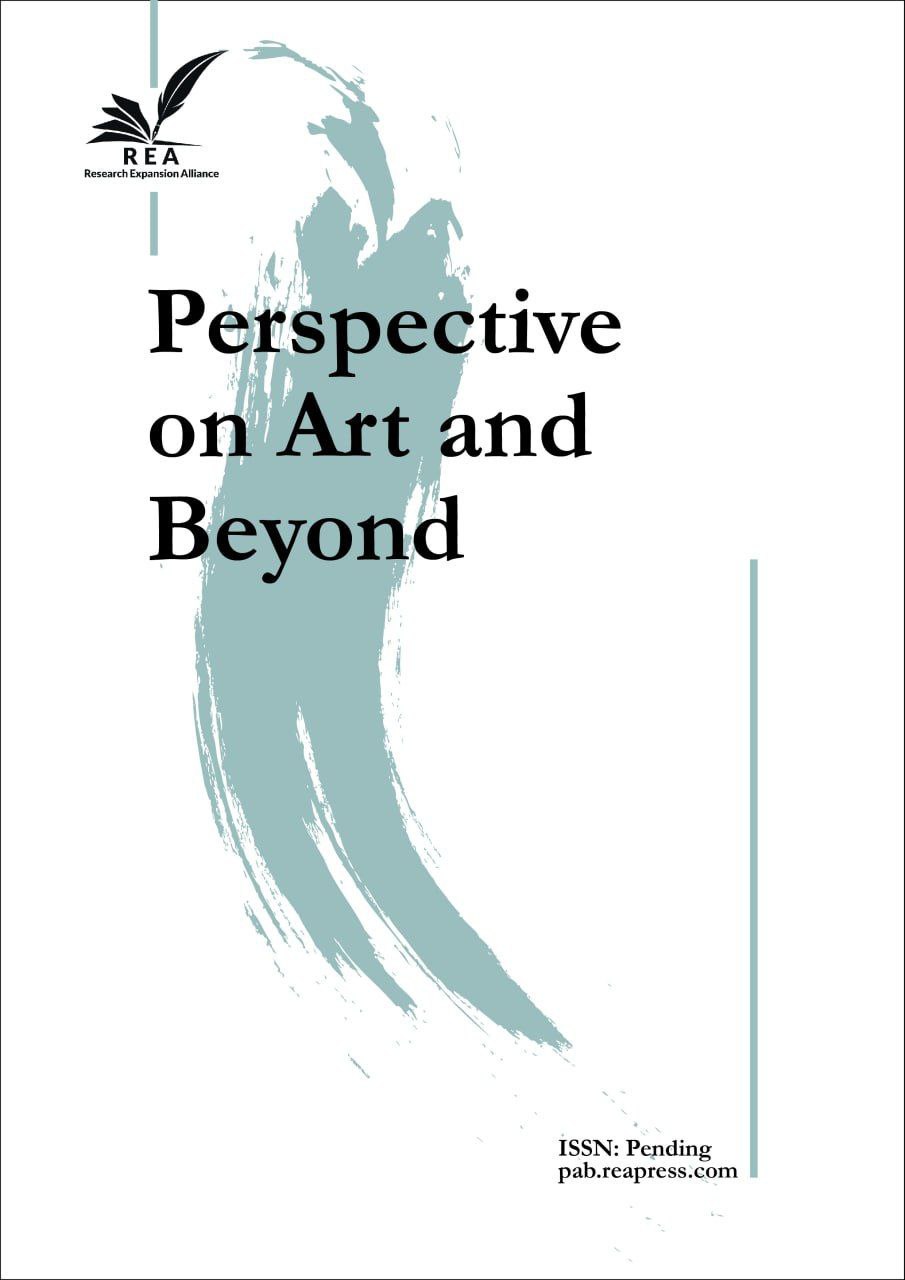Study and Analysis of Animal Motifs in Sassanian Art
Abstract
The art of the Sasanian era in Iran contains numerous examples of animals, mythical creatures, various elements of nature, and symbolic motifs. This art represents a millennia-long artistic process with open doors to all foreign cultures. According to the tradition of the land that nurtured it, it has been transformed and adapted over time. It is an art whose radiant brilliance extends to the world's furthest corners through architecture, reliefs, and small, functional objects. Sasanian art is adorned with various plant and animal motifs imbued with symbolic meanings and profound concepts, depicted on palace walls, silver vessels, engraved stone seals, and silk fabrics. The repetition of these visual elements was primarily connected to political purposes and religious propagation. They bear an explicit or sometimes ambiguous expression rooted in the specific beliefs of that era. This research seeks to answer the question: which fundamental beliefs of the Sasanian period are reflected in these symbolic and mythical motifs? Evidence indicates that many of the ideas and beliefs manifest in the art of this period were drawn from the millennia-old heritage of the Iranian people. The present research has been conducted using the historical method. Information has been collected through available library resources and the visual study of examples of artistic works housed in domestic and international collections. The research focuses on the motifs used in Sasanian art, specifically examining those influenced by the artistic traditions of ancient Iran. The methodology employed in this study is descriptive-analytical and historical, based on historical documents and evidence.
Keywords:
Iconography, Sassanids, Animal motifs, Symbolism, Sassanian artReferences
- [1] Vosogh Babae, E., & Mehrafarin, R. (2015). Iconography of the scenes of hunting in the Sassanid Era. Negareh journal, 10(35), 32-48. (In Persian). https://doi.org/10.22070/negareh.2015.253
- [2] Taheri, A. (2013). The images of “animal-plant” in the sassanid arts and their influence on Islamic arts and romanesque in France. Journal of fine arts: Visual arts, 18(2), 1-14. (In Persian). https://dor.isc.ac/dor/20.1001.1.22286039.1392.18.2.4.8
- [3] Mehrpoya, H., Dehghani, Z., & Alinejad, H. (2013). The effect of animal motifs of Sasanian textiles on the patterns of transoxiana fabrics. Motaleate tatbighi honar, 3(5), 77-89. (In Persian). https://sid.ir/paper/205379/en
- [4] Mirzaei A. A. (2010). On the nature, characteristics and framework of achaemenid empire. History of islam and Iran, 20(5), 113-147. (In Persian). https://www.sid.ir/paper/187787/en
- [5] Allahi, H. A. A., & Ayatollahi, H. (2003). The book of Iran: The history of Iranian art. Center for International-Cultural Studies. https://books.google.com/books?id=Al0jpyRDGe8C&sitesec=buy&source=gbs_buy_r
- [6] Fisher, G. (2011). Between empires: Arabs, Romans, and Sasanians in Late Antiquity. OUP Oxford. https://books.google.com/books?id=aimQDwAAQBAJ
- [7] Root, M. C. (2002). Animals in the art of ancient Iran (pp. 169–209). Leiden, the Netherlands: Brill. https://brill.com/view/book/edcoll/9789047400912/B9789047400912-s006.xml
- [8] Skjaerv, P. O. (2025). The horse in indo-Iranian mythology. Journal of the american oriental society, 128(2), 295–302. http://www.jstor.org/stable/25608360
- [9] Sajjadiraad, S. S., & Sajjadiraad, S. K. (2013). Studying the importance of the horse in the mythologies of Iran and other nations and its reflection in Ferdowsi’s Shahnameh. Epic literature research paper, 9(16), 99-128. (In Persian). https://ensani.ir/file/download/article/20141211111527-9810-125.pdf
- [10] Kateb, F., & Taheri, M. (2016). Studying the relationship between the symbolic motif of the goat and the motif of the tree and the symbol of the sun and moon in ancient Iran. The 7th international conference on economics and management, Tehran, Iran. Civilica. (In Persian). https://civilica.com/doc/536329
- [11] Behnood, M., Afzal Tousi, E. sadat., Mousavi lar, A. S. (2016). A cross-historical investigation on goat motif design evolution. Glory of art (JELVE-Y HONAR) alzahra scientific quarterly journal, 8(2), 29-42. (In Persian). https://doi.org/10.22051/jjh.2017.6252.
- [12] Hamidi, K. (2012). Zoology of the world from the beginning of human emergence up to now. 1st congress of integrated zoologyAt: Ferdowsi university of Mashhad, Mashhad, Iran. (In Persian). https://www.researchgate.net/publication/323535370_janwrshnasy
- [13] Root, M. C. (2002). Animals in the art of ancient Iran. A history of the animal world in the ancient near east. https://doi.org/10.1163/9789047400912_006
- [14] Jones, S. (2011). Lions, serpents, and lion-serpents in job and beyond. Journal of biblical literature, 130, 663–686. https://doi.org/10.2307/23488273
- [15] Moharrami, R., & Namvar, N. (2015). Study and comparison of the role of cow myths in Ferdowsi’s Shahnameh and Pahlavi texts. University of mohaghegh ardabili, (In Persian). https://www.sid.ir/FileServer/SF/5341394h10554.pdf
- [16] Faraji, n. (2015). A glance at mythology of sacred bovine in the indo-Iranian ancient beliefs. Scholars journal of arts, humanities and social sciences, 3(5), 986–989. https://saspublishers.com/article/12828/download/
- [17] Panjehbashi, E., & Mohazzab Torabi, S. (2022). Study of animal motifs of sassanid textile design. Ancient Iranian studies, 1(2), 97-112. (In Persian). https://doi.org/10.22034/ais.2022.330912.1012
- [18] Shahriyari, N., & Teymouri, S. (2019). The symbols of the goddess of waters in Iran’s culture. Adab Al-Kufa, 2(38), 111. https://doi.org/10.36317/kaj/2018/v1.i38.773
- [19] Benveniste, E. (1929). The persian religion according to the chief greek texts. P. Geuthner. https://www.google.com/books/edition/The_Persian_Religion/uVUrAAAAIAAJ?hl=en


